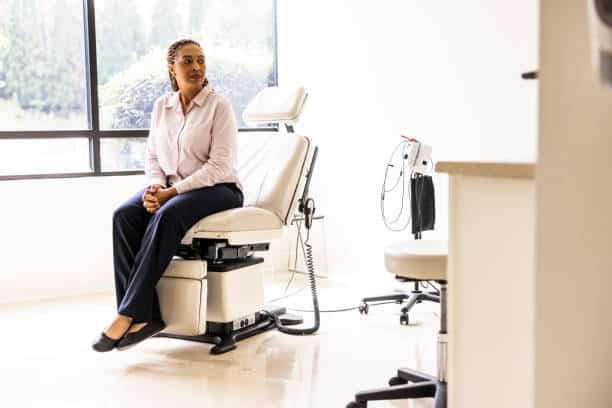
Chronic Inflammatory Demyelinating Polyneuropathy (CIDP) is a rare but treatable condition. Although the symptoms — muscle weakness, numbness, tingling, and loss of coordination — can significantly affect daily life, the good news is that effective treatments are available. The main goal of therapy is to calm the immune system’s attack on the nerves, reduce inflammation, and restore nerve function.
For many people, treatment can not only slow the disease but also improve strength, mobility, and quality of life. Here’s what you need to know about the most common treatment options.
First-Line Treatments for CIDP
Healthcare providers generally start with three primary treatments, known as first-line therapies. These include corticosteroids, plasma exchange (plasmapheresis), and intravenous immunoglobulin therapy (IVIG).
Each treatment works differently, and your provider will decide which is best based on your symptoms, overall health, and how you respond to therapy. Sometimes, more than one option is tried before finding the most effective plan.
1. Corticosteroids
Corticosteroids, such as prednisone, are often one of the first treatments offered. These medications reduce inflammation throughout the body and, in CIDP, help stop the immune system from damaging the protective myelin sheath around nerves.
Many patients notice improvement in their symptoms with corticosteroids alone. Increased strength, reduced tingling, and better mobility are possible with consistent use.
However, there are limitations. Corticosteroids can cause serious side effects, especially if taken for a long time. Potential risks include:
-
Weight gain
-
High blood pressure
-
Diabetes or worsened blood sugar control
-
Weakened bones (osteoporosis)
-
Increased risk of infections
Because of this, providers typically use the lowest effective dose for the shortest possible time. In some cases, doctors may combine corticosteroids with immunosuppressants — medications that also calm the immune system — to enhance effectiveness while reducing steroid exposure.
RELATED: How is CIDP Diagnosed? Tests You Need to Know

2. Plasma Exchange (Plasmapheresis)
Plasma exchange, also called plasmapheresis, is another cornerstone treatment. It works by physically removing the harmful antibodies in the blood that are attacking the nerves.
Here’s how it works:
-
Blood is drawn from your body and passed through a machine.
-
The machine separates the plasma (the liquid part of blood) from blood cells.
-
The plasma is treated or replaced with a substitute fluid.
-
The blood cells and treated plasma are then returned to your body.
This process helps reduce immune system activity and gives nerves a chance to heal.
Plasma exchange is usually effective but only for a short time — often a few weeks. Because of this, many people require intermittent treatments over months or years. While it can be time-intensive and requires access to specialized medical facilities, it can provide meaningful symptom relief.
3. Intravenous Immunoglobulin Therapy (IVIG)
IVIG has become one of the most widely used and effective treatments for CIDP. It involves giving patients intravenous (IV) infusions of immunoglobulins, which are antibodies collected from thousands of healthy donors.
These antibodies work by “distracting” or calming the overactive immune system, preventing it from attacking the nerves. IVIG is thought to block or neutralize the damaging antibodies linked to CIDP.
Treatment usually starts with high doses, followed by maintenance infusions given every few weeks. Many patients notice improvements in strength, balance, and sensation.
While generally well-tolerated, IVIG is not without challenges. Possible side effects include:
-
Headaches
-
Flu-like symptoms
-
Blood clots (rare but serious)
-
Kidney problems (also rare)
Because IVIG requires regular infusions, it can be a long-term commitment. Still, for many people, it provides significant and sustained benefits.
Beyond First-Line Therapies
Not everyone responds fully to corticosteroids, plasma exchange, or IVIG. In these cases, providers may turn to second-line treatments or combination approaches. Options include:
-
Immunosuppressants: Medications such as azathioprine, mycophenolate, or cyclophosphamide may be used to control the immune system more aggressively.
-
Monoclonal antibodies: Drugs like rituximab, which target specific immune cells, are being studied and sometimes used in difficult cases.
Because CIDP varies from person to person, treatment often requires tailoring and adjustments over time.
The Role of Clinical Trials
Researchers are actively investigating new therapies for CIDP, with the goal of enhancing effectiveness and minimizing side effects. Clinical trials may test novel medications, different dosing strategies, or new methods for delivering existing treatments.
Participating in a clinical trial may provide access to cutting-edge care and help advance medical knowledge. If you’re interested, ask your healthcare provider whether there are trials in your area that might be appropriate for you.
Supportive Care and Lifestyle
While medications are the mainstay of treatment, supportive care is also essential. This may include:
-
Physical therapy to maintain muscle strength, flexibility, and balance
-
Occupational therapy to improve daily functioning and adapt to challenges
-
Assistive devices like braces, canes, or walkers to support mobility
-
Healthy lifestyle choices, including balanced nutrition, regular low-impact exercise, and stress management
Living with CIDP often requires patience and persistence. Combining medical treatments with supportive strategies can maximize independence and quality of life.
Why Early Treatment Matters
The earlier CIDP is diagnosed and treated, the better the outcomes. Early intervention can stop progression, reverse nerve damage, and prevent long-term disability. Delayed treatment, on the other hand, increases the risk of permanent weakness or mobility loss.
That’s why recognizing symptoms — and starting treatment as soon as possible — is so critical. With proper care, many people experience significant improvement and can return to their normal activities.
Takeaway
CIDP may be rare, but it’s treatable. The three first-line treatments — corticosteroids, plasma exchange, and IVIG — form the foundation of care, with other therapies and clinical trials available for more complex cases.
Treatment isn’t always a quick fix, and finding the right approach can take time. But with persistence, medical support, and lifestyle adjustments, many people living with CIDP can regain strength, mobility, and hope for the future.
If you or a loved one has been diagnosed with CIDP, talk with your healthcare provider about the best treatment options for your situation. The road may be challenging, but effective therapies are within reach.









